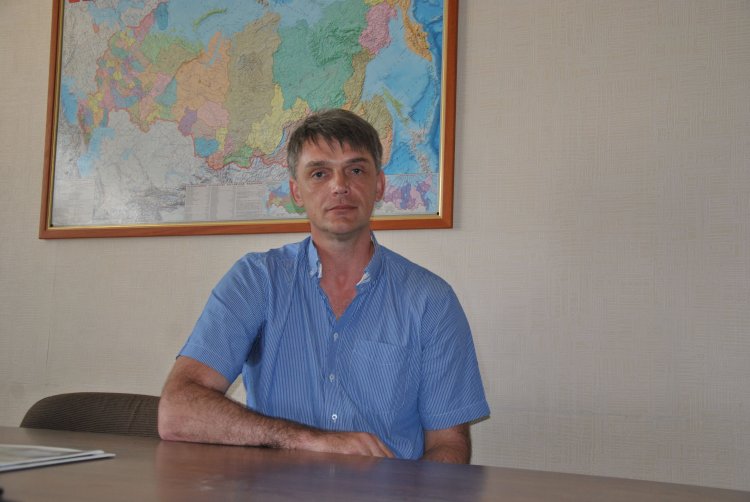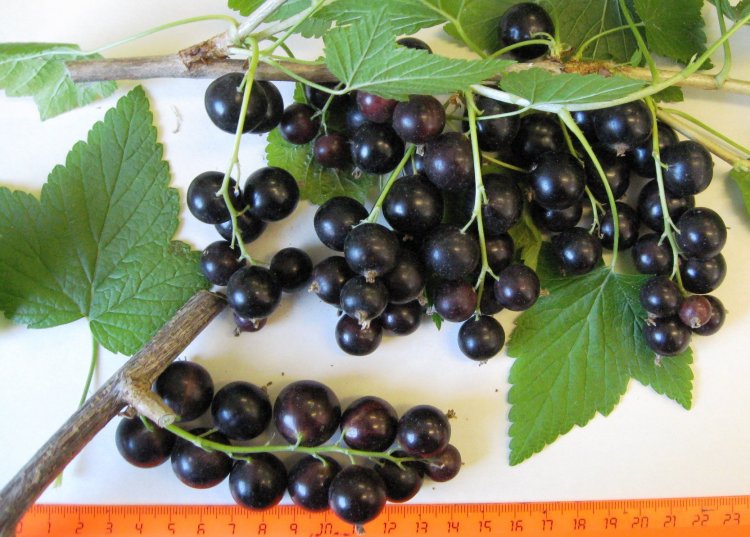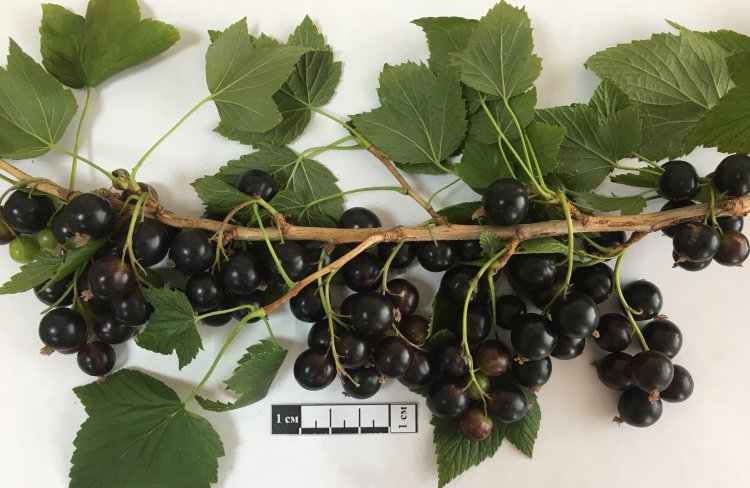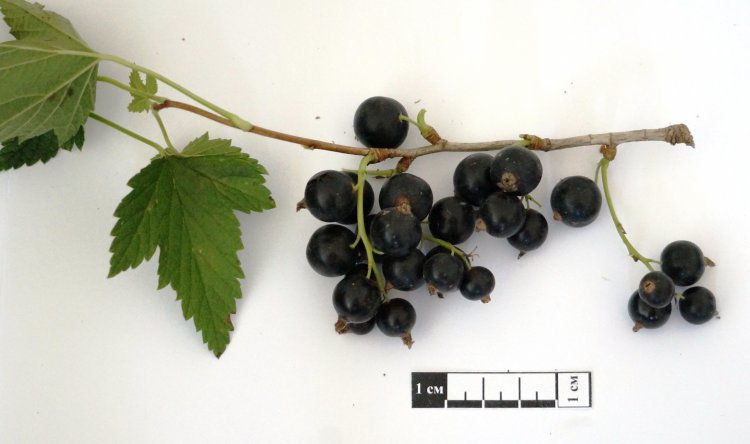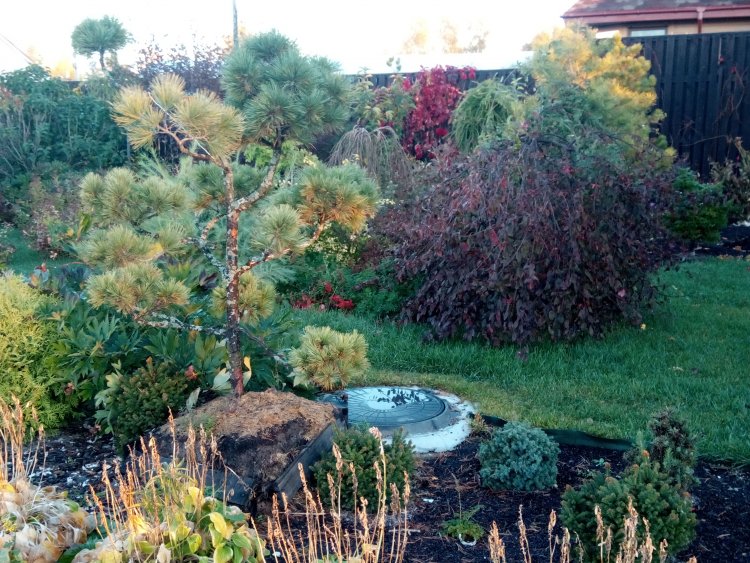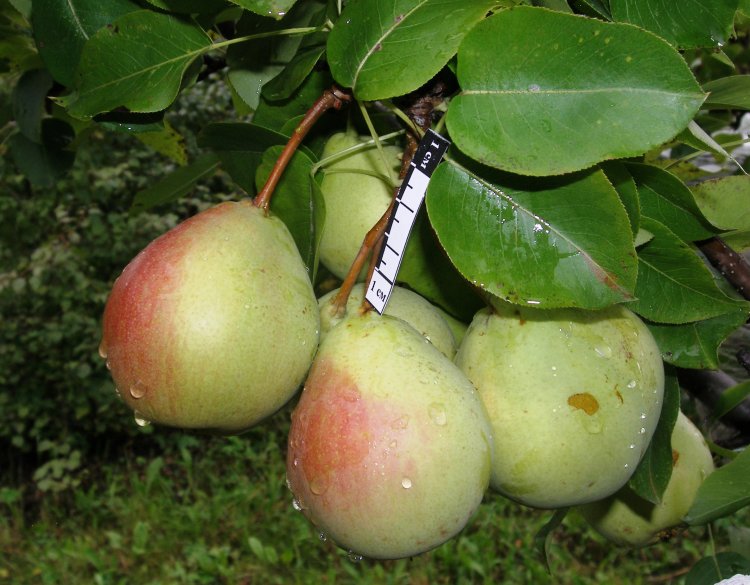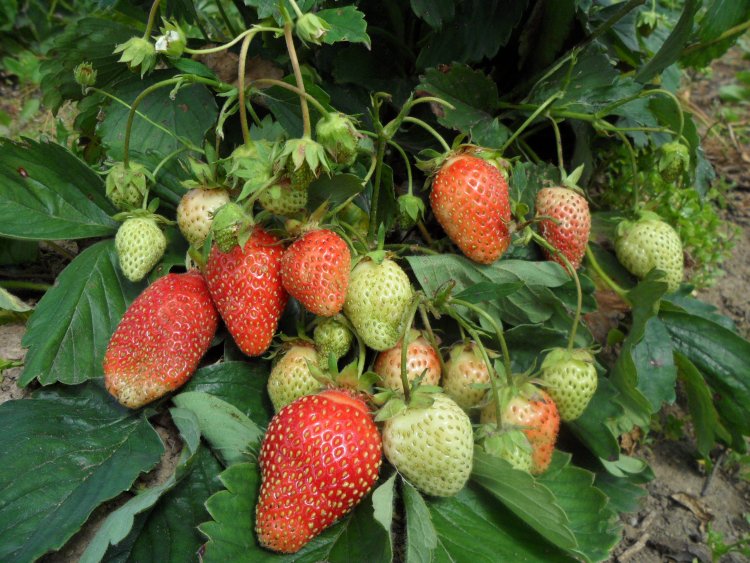Russian specialists are carrying out long-term research on crossbreeding of promising varieties of fruit and berry crops adaptive to extreme climatic conditions of Siberia and the Urals.
The introduction (resettlement outside the natural area) of fruit and berry crops to Siberia and the Urals has come a long way before becoming firmly entrenched in the gardens of this harsh climatic zone. Thanks to the efforts of enthusiasts and later the work of scientists, it became possible to breed local winter-hardy varieties of apple, pear, cherry, plum, and even grapes. Modern methods combined with acquired experience allow the specialists to identify promising combinations of hybrids.
For many years, domestic breeders have been engaged in the creation and selection of the most winter-hardy varieties for Siberian and Ural horticulture based on the world’s assortment of fruit and berry crops. The specialists assess resistance to antibiotic and biotic factors, productivity, fruit quality, and identify varieties with a wide range of adaptive capabilities in harsh climatic conditions. The Russian breeding fund has been replenished with new varieties that are not only resistant to cold climate, but also highly resistant to scab, will please the consumer with a long period of winter storage, and are recommended for usage in industrial horticulture.
Sergey Alexandrovich Makarenko – Doctor of Agricultural Science, Deputy Scientific Director of the Federal State Budgetary Scientific Institution “Ural Federal Agrarian Research Centre, Ural Branch of the Russian Academy of Sciences” (Yekaterinburg).
Sergey Alexandrovich Makarenko – Doctor of Agricultural Science, Deputy Scientific Director of the Federal State Budgetary Scientific Institution “Ural Federal Agrarian Research Centre, Ural Branch of the Russian Academy of Sciences” (Yekaterinburg) – told us about the adaptive potential and assortment of fruit and berry crops of the Ural and Siberian selection; in particular, about the basics of long-term apple breeding, and presented his book published using a grant of the Russian Foundation for Basic Research, in which the experience of Russian breeders of the Urals will be summarized for the first time.
What are the specifics of breeding fruit and berry crops in the extreme conditions of Siberia and the Urals?
“The climate dictates what the breeder of fruits and berries will encounter and what they will work on. First, it’s the winter-hardiness, regardless of whether you choose an aboriginal culture (like honeysuckle, black currant, sea buckthorn), or a selective one. All the Ural and Siberian varieties are based on highly winter-hardy local species: for apple, it’s the Siberian crab apple; for pear, the Ussurian pear; for plum, the Chinese or Canadian plum, or sand cherry; for currant, the Siberian subspecies; for honeysuckle – the Kamchatka or blue honeysuckle. In general, the Ural and Siberian varieties cover the entire Russian Federation and often the best foreign varieties are involved in their origin,” – says Sergey Makarenko.
What are the traditionally grown (standard zoned) varieties of fruit and berry crops in Siberia?
“Neither the Urals, nor Siberia are within the natural habitat of apple and pear trees. The first varieties – Anise, Antonovka, Grushovka – were introduced by the settlers, but these popular varieties froze out during the very first winter since the air temperature drops to -40 °C on the snow surface. The first breeders were the exiles from Krasnoyarsk and Tomsk: the Krutovsky brothers, Tyazhelnikov, Kaschenko, and others. They realized that importing varieties was pointless as it was impossible to adapt them to Siberian conditions: it was only reasonable to obtain your own varieties by selection. So, they brought in the Siberian crab apple and pollinated the European varieties with it. The Ranetka crabapple weighing 8–12 grams formed the basis of the first assortment of the Urals and Siberia and became the starting material for the selection of new apple varieties in the region. The development of gardening in harsh conditions is also associated with the name of Pavel Aleksandrovich Zhavoronkov, who went on an expedition across Transbaikalia and brought specimens of apple trees for breeding. This is how the Uralskoye Nalivnoye variety was created – not big in size, but very tasty. Some of the varieties of the first generation are still spreading in remote cold regions of the country, and later generation varieties are common in Yekaterinburg, Chelyabinsk, Orenburg, Kurgan Oblast, Bashkiria, with an average weight of 120–150 grams. These are full-fledged fruits with good flavor and different ripening times.
All the varieties obtained in the Urals and Siberia begin vegetation in late April and end in the 20s of September. Here, apples and pears don’t stand with leaves before winter; otherwise, it’s a sign that the tree is not ready for the winter period. All the varieties created in Siberia and the Urals are sweet and sour, and now we’re considering breeding varieties with low acid content. In general, it is very difficult to obtain varieties with a late ripening period and long shelf life. The tree nourishes the fruits to the last, but at the same time, it needs to prepare for the winter period. This year the summer in the Urals was hot, and our summer varieties are already ripe. Flowering took place in a very short time. In general, we expect a good harvest,” – the researcher informed us in detail.
Which varieties are the most suitable for winter storage?
“In the Urals, the Blagaya Vest variety, bred by Leonid Andrianovich Kotov. Their average weight is 90 grams, and the fruits can be stored for 1.5 years subject to technological storage conditions until the next new year. Sverdlovchanin, Krasa Sverdlovska, Orenburgskoye Zimnee, Kibo can be stored up to March, Pervouralskaya until February/March.
The most interesting Siberian varieties are Altayskoye Zimnee, which, by the way, feels great in the Urals; Altayskoye Purpurovoe, with an average fruit weight of 64–70 grams and shell life till March/April; Mountain Sinap – 90–120 grams, can be stored till February. These are the best apples,” – says Sergey Makarenko.
Which ones are the most in-demand among consumers?
“They’re all good. All the listed varieties taste great,” – the scientist assured us.
For planting in the garden in cold regions, the researcher recommends Zavetnoye, Sverdlovchanin, Pervouralskaya varieties as the most winter-hardy.
Dobry Jinn black currant. A large-fruit variety characterized by an early ripening period and a dessert berry flavor.
Kushnarevskaya black currant. A Bashkir large-fruit variety. The ruler shows the size of berries.
Sybil black currant. A large-fruited, flavorful, productive variety of Chelyabinsk selection.
Are there any differences in crop selection for different cold regions of Western Siberia, South-Western Siberia, Altai?
“Of course, the farther north the region, the less warmth there will be for ripening and growing of the fruit and berry crops. Preference should be given to berries. Therefore, it is better to plant early- or medium-ripening varieties. If we’re talking about Western Siberia, it is possible to grow varieties of fruit crops with a winter period of fruit consumption,” – says the researcher.
Now in the Urals, it is planned to lay commercial plantings of apple trees near Yekaterinburg of the Ural and Siberian selection for processing and for obtaining pectin. In the Orenburg and Chelyabinsk Oblasts, such commercial plantings for industrial horticulture already exist.
Sergey Makarenko specializes in variety research and selection of promising apple varieties that are most adaptable to harsh conditions. As a research fellow, he worked for 20 years in Siberia in the Department of Mountain Horticulture of the Lisavenko Research Institute of Horticulture for Siberia (Gorno-Altaysk), and for the last three years has been conducting scientific research in the Ural Federal Agrarian Research Centre, Ural Branch of the Russian Academy of Sciences (Yekaterinburg).
“I was lucky to work with three generations of apple breeders from the Lisavenko Research Institute of Horticulture for Siberia, today it’s the Federal Altai Scientific Center for Agrobiotechnology in Barnaul: Academician Ida Pavlovna Kalinina was my doctoral advisor, and I also consider Nadezhda Vladimirovna Ermakova and my advisor’s predecessor Zoya Sergeevna Yaschemskaya as my teachers,” – Sergey Makarenko is proud of carrying on the tradition of the scientific school.
One of the main scientific achievements of Sergey Makarenko is the selection of apple trees resistant to scab. At the Gorno-Altayskoye Federal State Unitary Enterprise of the Russian Agricultural Academy in Gorno-Altaysk, the scientist successfully introduced artificial infection with scab, which made it possible to reject up to 50% of hybrids in order to take only resistant genotypes, by applying the polyploidy method (i.e., involving polyploid apple varieties, that are self-fertile, large-fruited, high-yielding, have a long shelf life, and are highly resistant to scab). Hybridization took place in a large volume, and based on the assessment of morphological characteristics (thickness of the leaf, ratio of length and width), the scientist learned to identify a polyploid plant. These scientific developments of Sergey Makarenko were included in his doctoral thesis “Adaptive Apple Breeding in the Altai Low Mountains.”
Blagaya Vest apple variety
The main areas of scientists’ research in Gorno-Altaysk regarding apple breeding have been and remain selection for winter hardiness, scab resistance, and polygenic resistance. Russian specialists obtained very good results and developed scientific traditions, and not only donors but also indigenous varieties were used in the selection. For example, the varieties Mountain Sinap, Tolunai, Sukhrai of Altai selection, which do not lose stability under any circumstances and even when transferred to other regions. In addition, good selection was achieved by scientists for the strength of growth: the varieties of apple trees with a compact crown were obtained, which are grown on small farmsteads. In the European part, such varieties of apple trees are called columnar. They are very fertile, and their compact shape allows you to place up to 4,000 plants per hectare and get up to 40 tons of crops.
“In the varieties of the Ural and Siberian selection, even under unfavorable winter conditions, when the wood freezes, the winter hardiness of the fruit buds is higher, and the tree still bears fruit well. However, more attention needs to be paid to watering and pruning trees,” – specifies the researcher.
Seyanets Titovki variety. One of the first varieties of Bashkiria, original, with a winter period of fruit consumption.
Today, Ural scientists have bred over 500 varieties, maintain bioresource collections, and actively cooperate with their colleagues from other countries, such as Kazakhstan, Belarus, and, of course, from other regions of Russia. Exchanges of apple pollen took place with Svetlana Nikolaevna Artyukh from Krasnodar, with specialists from the All-Russian Research Institute of Fruit Crops Breeding in Oryol (donors of the Oryol collection are used for hybridization and improvement of Siberian and Ural varieties of various crops), with Nikolay Ivanovich Savelyev and his successor Natalya Nikolaevna Savelyeva from Michurinsk.
“A breeder is not merely a specialist who crosses trees: first of all, he studies varieties,” – remarks Sergey Makarenko.
Russian scientists have also developed a number of decorative apple trees with different architectural crowns, intensities of leaf, flower, and fruit coloring, suitable for cultivation in harsh climatic conditions. According to the scientist, “this is a byproduct. Each breeder usually does something else besides their own type. Ural and Siberian varieties of ornamental apple trees are distinguished by good winter hardiness and scab resistance. They bloom beautifully. They are in good demand among the local consumers and have even been transferred to the European part of Russia for cultivation.”
Alaya Plakuchaya decorative apple tree.
Yaroslavna decorative apple tree in Omsk (in the background).
According to Sergey Makarenko, “today, the adaptive potential of fruit and berry crops in Siberia and the Urals is high: even though apple varieties of early and late maturation have already been created, nevertheless, work with assortments continues. Amazing results were obtained for pears: to have varieties in the Urals that have a long shelf life is an outstanding achievement! For example, the Sultan variety (till March/April), Udacha Falkenberga (till March/April), Sretenskaya (till June). In the Urals, there are varieties that you can eat for New Year and such holidays like February 23, and March 8. There are also excellent honeysuckle varieties: Polyanka Kotova, Zarechnaya, Bakcharskaya (with large fruits), etc.”
Sultan pear – a variety characterized by long shelf life. The ruler shows the scale: one division is 1 cm.
Vita cherry. A large-fruited variety of the steppe cherry with field resistance to coccomycosis.
The painstaking and long-term work of Russian breeders will be presented in the book “Pomology of the Urals: Varieties of Fruit, Berry Crops and Grapes,” as part of a project under the Russian Foundation for Basic Research grant, which is due to be complete in December this year, and its publication is scheduled for early 2022. This monograph fully reflects the work of domestic horticulture, from 1926 to the present. It combines the research of four scientific and one industrial institution: the Ural Federal Agrarian Scientific Research Centre, which includes the Sverdlovsk Horticulture Breeding Station; the South Ural Scientific Research Center for Horticulture and Potato Growing – a branch of the Ural center; the Ufa Scientific Center of the Bashkir Research Institute of Agriculture; the Orenburg branch of the Federal Scientific Center for Horticulture; the Steppe Institute of the Russian Academy of Sciences; the Gardens of Russia Scientific and Production Association.
As Sergey Makarenko points out, “pomology is the study of fruit varieties. The 90s of the last century played a certain role in the development of science in Russia, especially in horticulture. We have perennial plantings and long-term research since it takes more than one year to create one variety, for example, from 15 years for strawberries, to 25–40 years for an apple tree. It was necessary to preserve the continuity of the generation and process the data received, and now the time has come to analyze the work done by the predecessors and what we have already obtained, as well as to outline the targets for the future”.
Italmas strawberry variety bred in Yekaterinburg. A large-fruited, adaptive variety with good berry flavor.
The book contains pomological descriptions of 17 varieties of folk selection, which were created before 1926 in the Urals. In total, a morphological description of 554 varieties of 19 fruit and berry crops and grapes will be presented – in general, these are original pomological studies with some refinement carried out by 64 breeders.
Sergey Makarenko points that “there will be no cultivation technology here. With regard to each culture, the historical aspect of the formation of culture as such, how the stages of its formation went through, what is ultimately obtained to date will be considered. The result is varieties that are included in the State Register of the Russian Federation and are approved in the region for which the institutions operate and that are grown in the Volgograd region, in the Volga region, in the Ural, West Siberian, and East Siberian regions. However, this book will also be useful to amateur gardeners who grow fruit crops: after reading our monograph, they will be able to understand from the description of the variety what is growing in their garden. After all, the fact is that not all private plant nurseries provide the consumer with high-quality planting material.”
In the monograph, Sergey Aleksandrovich Makarenko acts as the editor-in-chief and compiler. The team of authors includes more than 20 national specialists: Evgeny Zakharovich Savin (Orenburg), Doctor of Agricultural Sciences. Vladimir Sergeevich Ilyin (Chelyabinsk), a leading specialist in apple breeding, whose varieties are included in the State Register of Breeding Achievements of Russia; Leonid Andrianovich Kotov (Yekaterinburg), head of the Sverdlovsk breeding station; Tatyana Nikolaevna Slepneva (Yekaterinburg), Elena Mikhailovna Chebotok, Candidate of Agricultural Sciences (Yekaterinburg), Senior Researcher Galina Nurislamovna Tarasova (Yekaterinburg), Candidate of Agricultural Sciences Elena Yurievna Novostrueva (Yekaterinburg); Senior Researcher at the Ufa Federal Research Center Haris Nigmatzyanovich Fazliakhmetov (Ufa), Candidate of Agricultural Sciences Nadezhda Stepanovna Evtushenko (Yekaterinburg); Candidate of Agricultural Sciences Firudin Mamedovich Gasimov (Chelyabinsk), Senior Researcher Margarita Germanovna Isakova (Yekaterinburg), Candidate of Biological Sciences and Senior Researcher Olga Evgenievna Merezhko (Orenburg), Senior Researcher Dmitry Dmitrievich Telezhinsky (Yekaterinburg); Candidate of Biological Sciences of the Ufa Federal Research Center Radmil Askhatovich Nigmadzyanov; Candidate of Biological Sciences Marina Aleksandrovna Tikhonova (Orenburg); Candidate of Biological Sciences, Head of the Chelyabinsk Fruit and Berry Section Mikhail Sergeevich Lezin (Chelyabinsk); Senior Researcher of the Ufa Federal Research Center Natalya Yuryevna Startseva (Ufa); Irina Ivanovna Bogdanova, former head of the Sverdlovsk selective gardening station (Yekaterinburg); Candidate of Agricultural Sciences, Senior Researcher of the Ural Agricultural Research Center and Head of the Research Institute of Potato and Horticulture Nikolay Vladimirovich Glaz, Candidate of Biological Sciences Elena Alekseevna Ivanova, Gulnar Ravilievna Musalimova (Orenburg).
As Sergey Makarenko points out, “such books have never been published in the Urals. In the 50s of the 20th century, books were published on the pomological description of the varieties of fruit and berry crops of modern assortments, which at that time were just being formed, or the varieties of foreign breeding were described, or the first varieties in the Urals, but still zoned. Today we have a very large number of garden centers, which show that they sell varieties of fruit and berry crops, including Uralic ones, but at the same time, the description of the varieties presented does not correspond to reality. This book will be a guide to the description of varieties.”
Thus, Russian breeders successfully continue to improve the scientific foundations of the assortment of fruit and berry crops in the Urals and in Siberia in terms of different quality and yield indicators. Environmentally safe, healthy, and flavorful products in the form of fruits and berries of various periods of consumption, resistant to diseases, and grown in harsh climatic conditions, are the main indicator of the adaptive potential of the gene pool of horticultural crops and the prospects of domestic breeding.
*All images are provided by Sergey Makarenko
